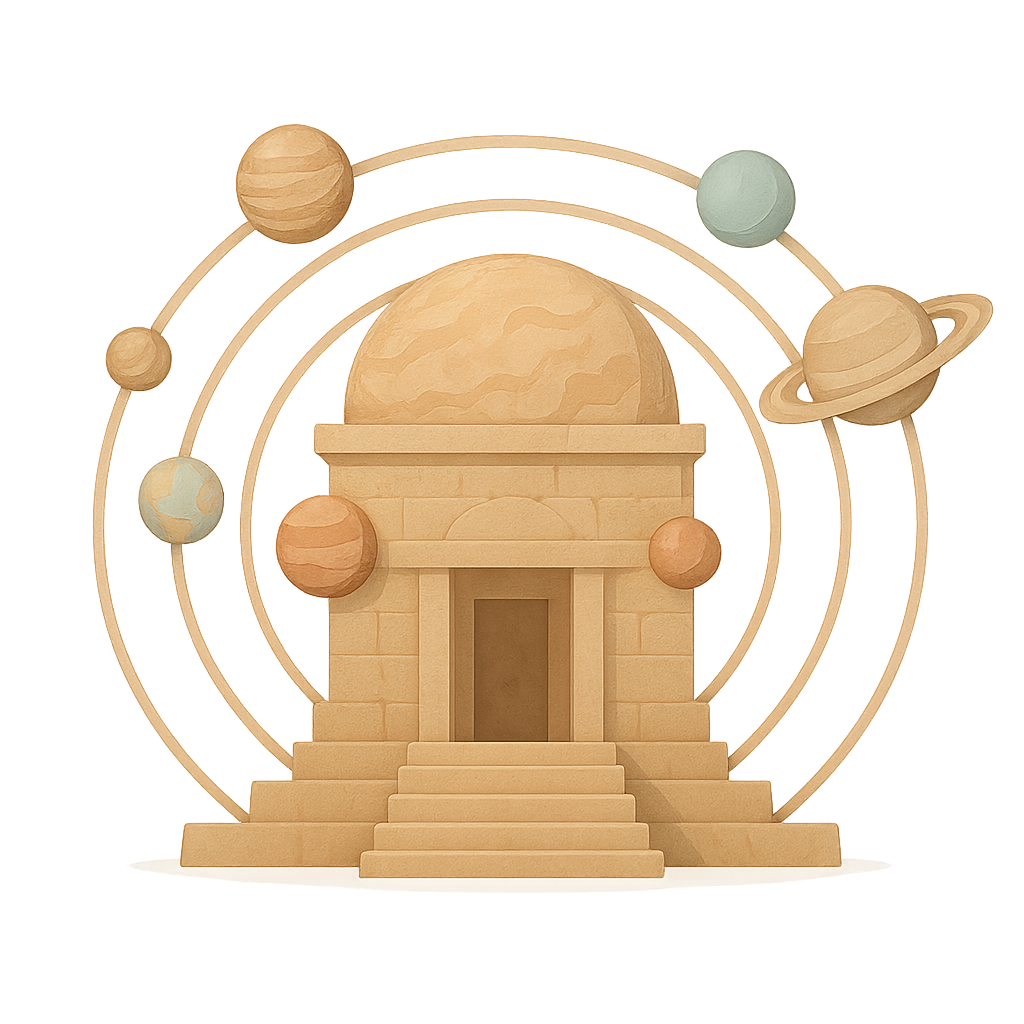A Cosmic Dance
Imagine spinning gently in an endless, quiet darkness, surrounded by countless tiny lights that glitter like spilled diamonds. At my very heart is a brilliant, warm star that glows with golden light, holding my entire family close. Around this star, my children dance in a slow, graceful ballet. There is a stormy giant with a swirling red spot, and another planet so beautiful it wears sparkly rings made of ice and dust. A little red world zips by, its dusty surface a mystery waiting to be explored. And then there is the most precious one of all, a swirling blue and white marble, teeming with life and wonder. Each one follows its own special path, held together by an invisible string. Together, we are a family of worlds, spinning through the cosmos. I am the Solar System.
My life began a very, very long time ago, about 4.6 billion years in the past. Before I had planets or even a sun, I was just a giant, cold, and dark cloud of gas and dust floating in space. Scientists call this a nebula. But then, something amazing happened. A force called gravity started pulling all that gas and dust together. It was like a cosmic vacuum cleaner, pulling everything toward the center. As more and more material squeezed together, the middle of the cloud got hotter and hotter until—WHOOSH. It burst into light and became a star, the one you call the Sun. All the leftover bits of rock, ice, and dust that didn't become the Sun started bumping into each other. They stuck together, growing bigger and bigger over millions of years, like rolling a tiny snowball until it becomes a giant snowman. These became my planets, my moons, and the asteroids that tumble through space. That is how my cosmic family was born from a cloud of stardust.
For thousands of years, the people living on that little blue marble, Earth, would look up at the night sky in wonder. They saw some of my lights wandering among the fixed stars and called them planets, which means 'wanderers'. They gave them beautiful names from their stories, naming them after gods and heroes like Mars, Jupiter, and Venus. For a long time, they believed their Earth was the center of everything, and that my Sun and all my other planets circled around them. It was a nice thought, but it wasn't quite right. Then, a man named Nicolaus Copernicus came along. Around the year 1543, he looked at the sky and did lots of math. He bravely suggested a new idea: what if the Sun was the center, and all the planets, including Earth, were the ones moving around it? Many people didn't believe him. Years later, around 1610, another curious thinker named Galileo Galilei built one of the first telescopes. He pointed it at the sky and saw things no one had ever seen before. He saw moons dancing around Jupiter and saw that Venus had phases, just like Earth's moon. This proved that not everything circled the Earth, and that Copernicus had been right all along. It was a discovery that changed everything.
That incredible curiosity didn't stop with telescopes. In modern times, humans wanted to visit my neighborhood up close. They built amazing robotic explorers to be their eyes and ears. In 1977, they launched the Voyager probes, two brave little spacecraft that flew past the giant outer planets, sending back the first close-up pictures of Jupiter's storms and Saturn's magnificent rings. They built tough little robots called rovers and sent them to crawl across the rocky red ground of Mars, searching for clues about its past. The most amazing moment of all came in 1969, when for the first time, human beings left their own world and took a giant leap onto my Moon. They walked on its dusty surface and looked back at their beautiful blue home. My family is still full of mysteries and secrets, and I love watching humans continue to dream, build, and explore. Every new rocket that launches and every new telescope that peers into the darkness reminds them, and me, that we are all part of a grand, wonderful universe, with so much more to discover.
Reading Comprehension Questions
Click to see answer
